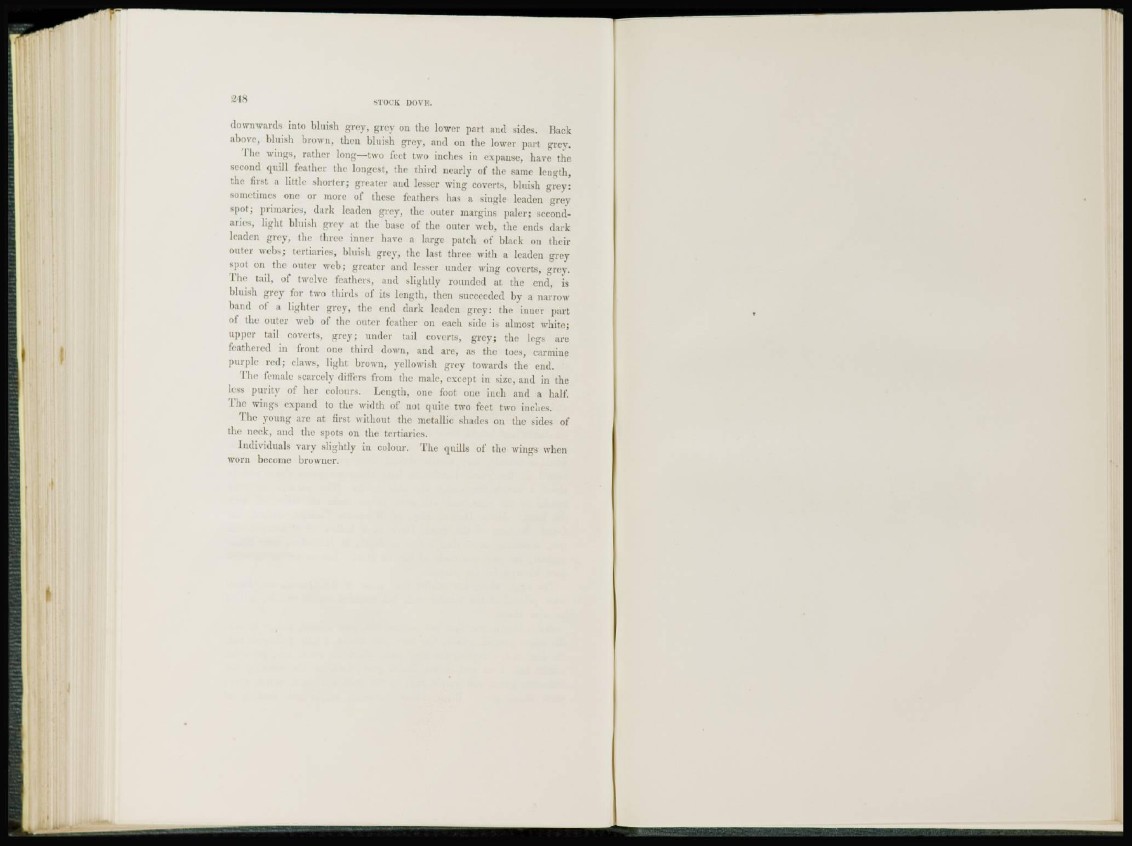
downwards into bluish grey, grey on the lower part and sides. Back
above, bluish brown, then bluish grey, and on the lower part grey.
The wings, rather long—two feet two inches in expanse, have the
second quill feather the longest, the third nearly of the same length,
the first a little shorter; greater and lesser wing coverts, bluish grey:
sometimes one or more of these feathers has a single leaden grey
spot; primaries, dark leaden grey, the outer margins paler; secondaries,
light bluish grey at the base of the outer web, the ends dark
leaden grey, the three inner have a large patch of black on their
outer webs; tertiaries, bluish grey, the last three with a leaden grey
spot on the outer web; greater and lesser under wing coverts, grey,
The tail, of twelve feathers, and slightly rounded at the end, is
bluish grey for two third-, of its length, then succeeded by a narrow
bar.d of a lighter grey, the end dark leaden grey: the inner part
of the outer web of the outer feather on each side is almost white;
upper tail coverts, grey; under tail coverts, grey; the legs are
feathered in front one third down, and are, as the toes, carmine
purple red; claws, light brown, yellowish grey towards the end.
The female scarcely differs from the male, except in size, and in the
less purity of her colours. Length, one foot one inch and a half.
The wings expand to the width of not quite two feet two inches.
The young are at first without the metallic shades on the sides of
the neck, and the spots on the tertiaries.
Individuals vary slightly in colour. The quills of the wind's when
worn become browner.